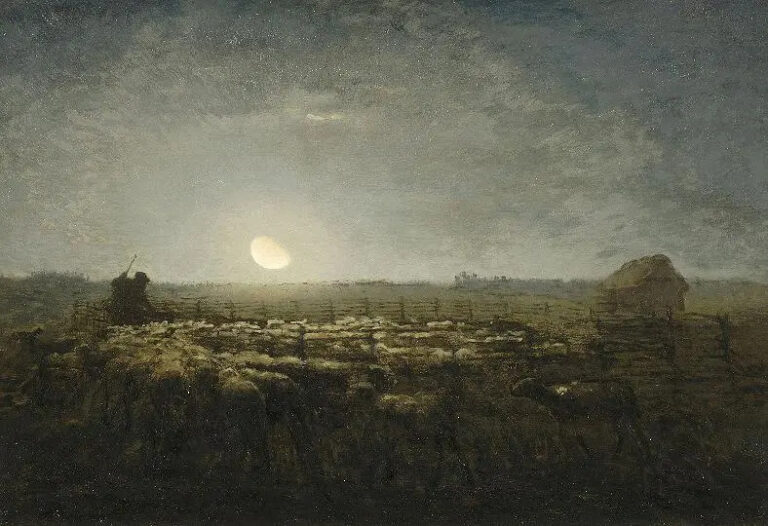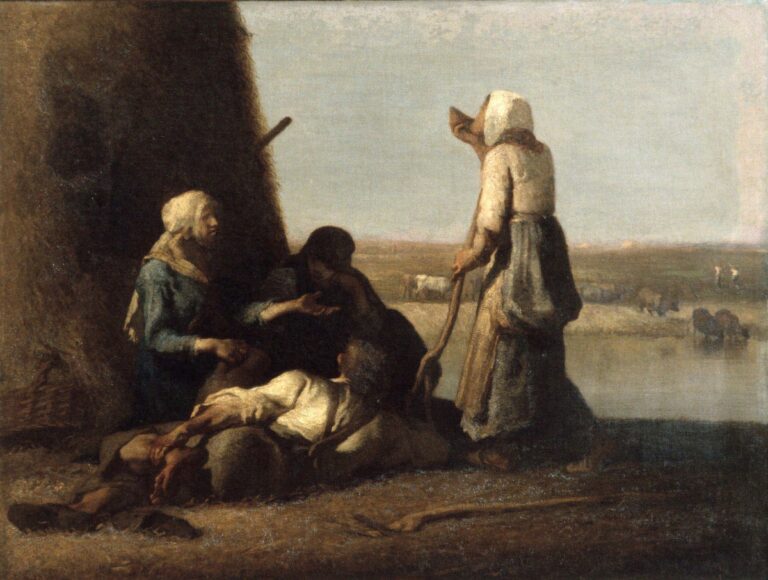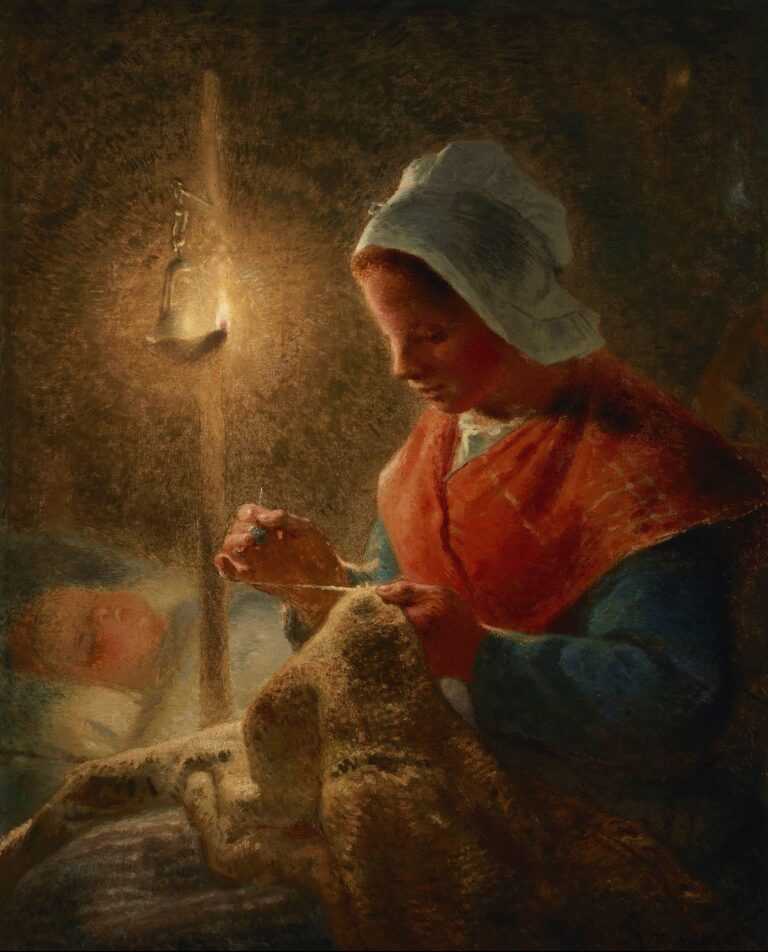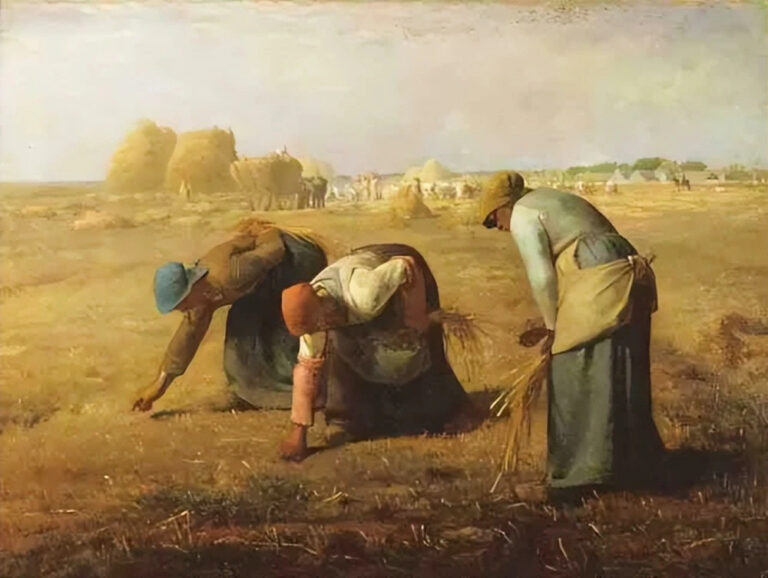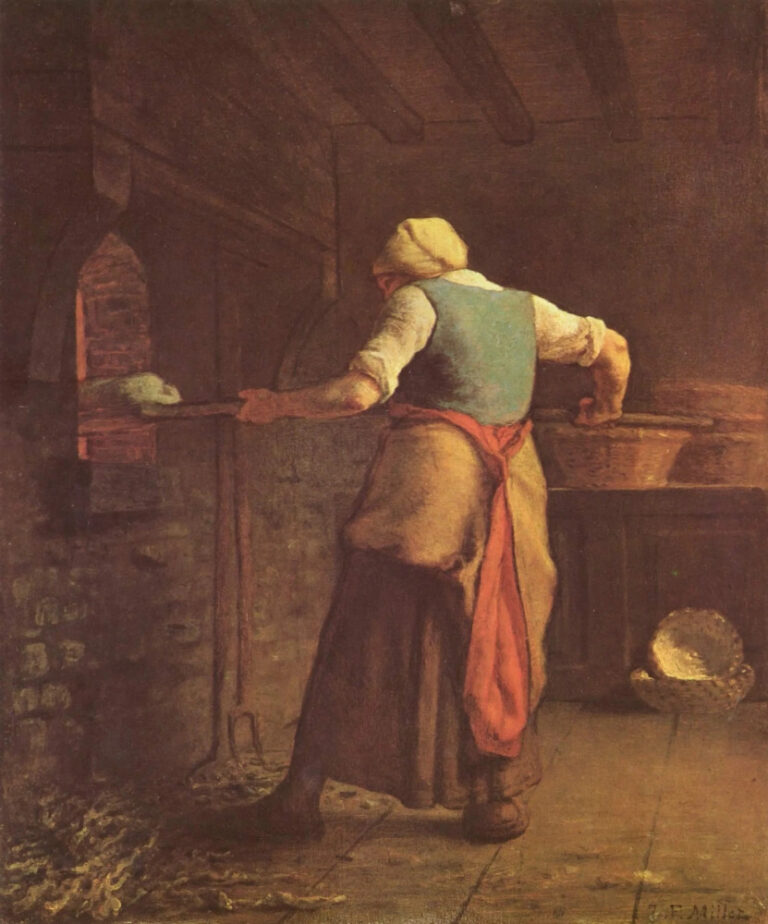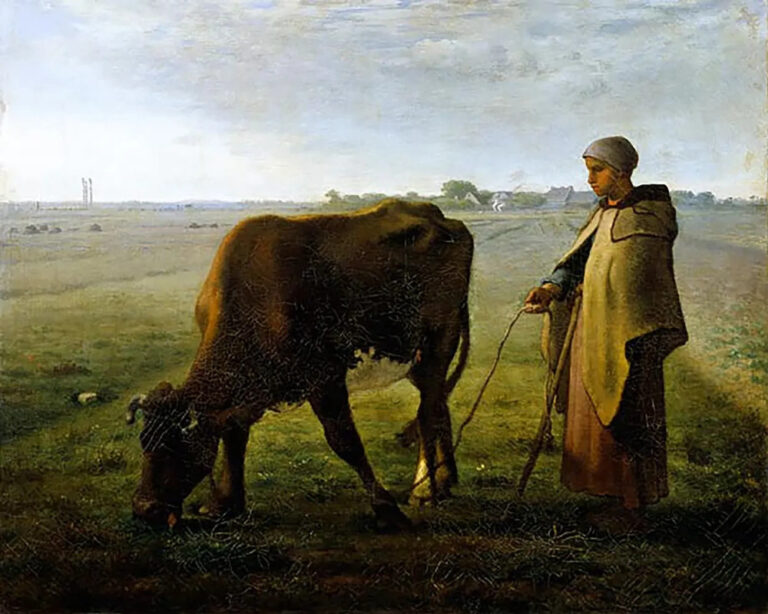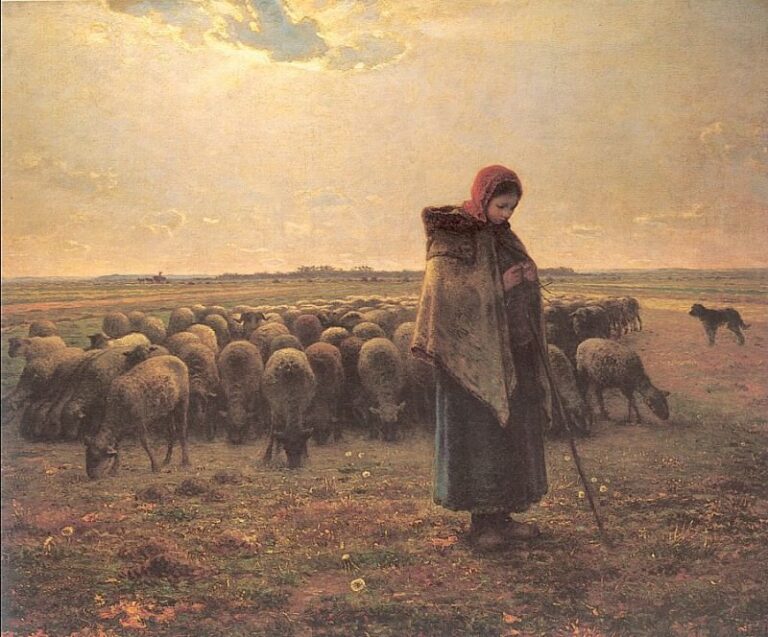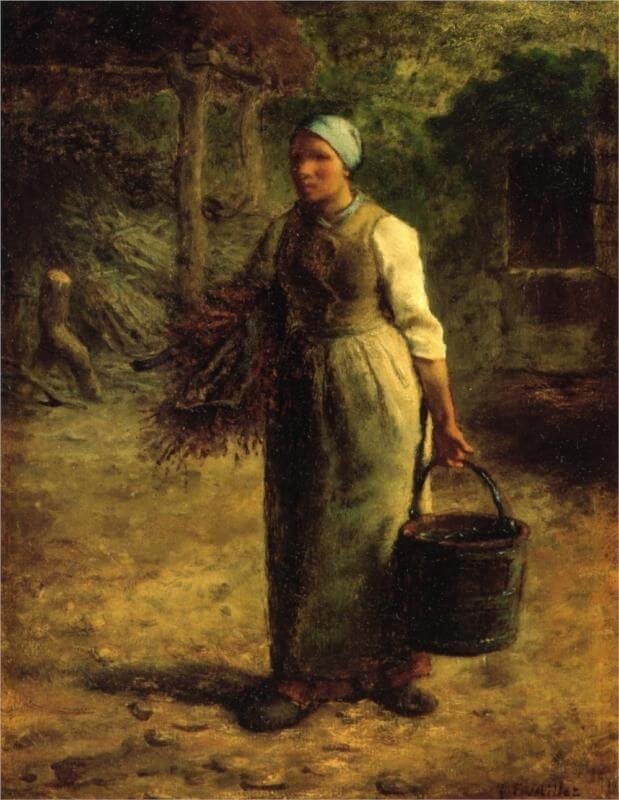Jean Francois Millet

Jean-François Millet (October 4, 1814 – January 20, 1875) was a pivotal French artist of the 19th century, known for his scenes of rural life that form an essential part of the Barbizon school. His art focused on presenting the dignity and grace of peasants and rural workers, diverging significantly from the conventional art of his time which often highlighted the urban elite and historical subjects.
Born into a peasant family in the Normandy village of Gruchy, Millet displayed artistic talent at a young age. This led him to pursue formal art training in Cherbourg before eventually heading to Paris to continue his studies at the prestigious École des Beaux-Arts in 1837.
Millet began his career by painting portraits and mythological themes, but his passion for showcasing the rural life of his childhood prevailed. His emphasis on peasant scenes, their work, and their relationship with nature was a reaction to the tumultuous socio-economic changes of his era, especially the Industrial Revolution.
Some of Millet’s most renowned works include “The Sower” (1850), “The Gleaners” (1857), and “The Angelus” (1859). These masterpieces are noted for their strong compositions and a profound sense of empathy towards the working class. His groundbreaking approach to his subjects was a source of inspiration for future artists, notably the impressionists and Vincent van Gogh, who admired his ability to infuse the ordinary with a sense of grandeur and nobility.
Despite initial controversy and criticism for what was perceived as a politically subversive depiction of the peasantry, Millet’s work eventually received recognition for its artistic merit. Over time, his unique perspective and artistry have cemented his reputation as a significant figure in French art, an artist who reshaped the boundaries of genre painting and offered an alternative vision of the world that challenged the conventions of his time.
Millet passed away in 1875 in Barbizon, France. Today, his artworks continue to be celebrated and displayed in prestigious museums around the world, including the Musée d’Orsay in Paris, the Metropolitan Museum of Art in New York, and the Museum of Fine Arts in Boston.
- 1
- 2

